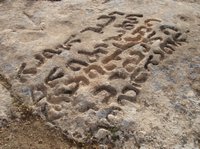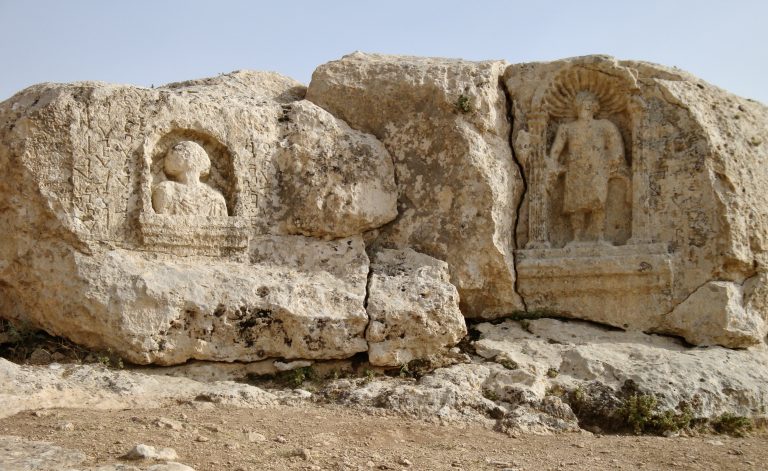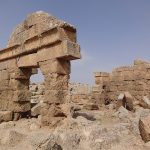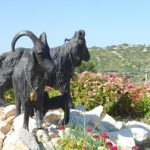“Rainy Place” (Yağmurlu) Population: negligible
Other name: Sumatar
If you drive 18 km from Şuayb City through the so-called Tek Tek Dağları (mountains) you will arrive in the remarkable village of Soğmater/Yağmurlu, once the centre of the cult of the moon god Sin. For me it’s one of the most romantic places in Turkey because of its aching sense of great age and because it’s that very rare thing – a village that is virtually unspoilt, the only concrete building being the school. Instead honey-coloured stone houses and the ruins of a castle on a mound in the middle of it blend into the background in the gentle way of a village in the Cotswolds in England. It’s quiet as can be here, with every living thing from the omnipresent sheep to the locals in their unisex lilac-coloured headscarves snoozing the day away beneath the sweltering sun.
Like Şuayib City, Soğmater is riddled with caves, most of them used as stables or storerooms. Ask around and someone will direct you to the amazing Pognon Mağarası (cave), named after Henri Pognon (1853-1921), the French explorer who first revealed it to the world. Its walls are decorated with life-size carvings of men; then on either side of a central niche which presumably housed an altar you will see twin heads crowned with crescent moons which suggest that this was a site associated with the cult of Sin.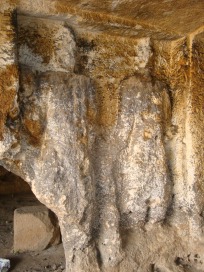
Soğmater’s school stands at the foot of what was once the sacred hill associated with the main local god, Mar Alahe. If you climb up it you will find, close to the summit, two carvings, one a full-length figure, the other a bust, which inscriptions in Syriac etched into the ground on top of the hill suggest are depictions of Sin dating back to the middle of the second century AD.
Further indentations in the surface were probably where sacrifices were made to the other planets represented by crumbling structures on the surrounding hills; the circular shrine to Venus is the most obvious today. It’s believed that pagan worshippers in Harran, known as Sabians, would have faced towards this hill in the days when the cult was equally strong there.
In 2012 Soğmater still existed in a world before tourism. There was nowhere to stay, nowhere to buy a meal and only the most basic of village shops, so eventually there was little alternative but to press on.
Leaving, there are two options. You can return the way you came to the beehive houses of Harran or you can take the direct road back to Urfa. This is a better idea since it gives you the chance to detour to visit the famous prehistoric site at Göbeklitepe in its eastern outskirts.
Transport info
There’s no public transport to Soğmater but tour operators in Urfa can organise a visit for you.
Onward travel
Senemağar
